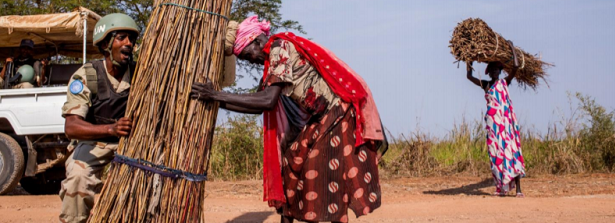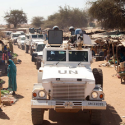Pathways for market-oriented development on the HDP nexus

To advance the Humanitarian-Development-Peace (HDP) nexus agenda in practice, policymakers and programme managers at (I)NGOs should start developing transition pathways for programming in settings affected by protracted crisis and conflict. This is one of the main conclusions in the final report “Pathways for market-oriented development on the HDP nexus” by The Broker for the F&BKP knowledge trajectory on food security and stability. This final report, in a series of three, documents the current state of innovation for HDP nexus programming based on lessons from ten recovery, resilience and market-oriented programmes in the Democratic Republic of the Congo, South Sudan and Nigeria.
To download |
|
As the recent COVID-19 crisis revealed on a global scale, crises can uncover structural problems in societal and economic systems. In settings that are affected by prolonged crises, and particularly when conflict is involved, the ‘new normal’ of crisis has long since become daily reality. Here, keeping basic systems like markets and food chains functioning depends on a (sometimes delicate) balance between resilience of households and communities, appetite for risk by market actors of various sizes, government support, informal governance arrangements, and support by aid actors. Times of relative stability are interspersed with shocks, leading to a balance often called ‘fragile’.
In recent years the need and opportunity to work with markets in such fragile and conflict-affected settings (FCAS) has increasingly become evident to policymakers and practitioners. Informed by several trends and insights and in view of the 2030 SDG targets, they are shifting strategies. The 2019 OECD-DAC Recommendation on the Humanitarian-Development-Peace (HDP) Nexus codifies this new focus for FCAS as ‘prevention always, development wherever possible, humanitarian action when necessary’. Yet as humanitarian and development interventions are implemented in similar areas here their approaches can both strengthen each other or conflict. Moreover, outside interventions can both support and harm the functioning of local markets and businesses on which the functioning of food systems – and thereby resilience of communities – depends.
So even though the need to implement the HDP nexus agenda is evident, how to effectively do this in practice can still be elusive to policymakers and practitioners. This is why the knowledge trajectory ‘Aid transitions in fragility and protracted crisis settings’ was started. In this project, The Broker explored how aid actors are working on the HDP nexus in practice by examining what innovation means in this context, how a transition from humanitarian to development goals is facilitated, what role coordination plays in this transition, and what trade-offs are made when combining these objectives. The final report ‘Pathways for market-oriented development on the Humanitarian-Development-Peace nexus’ provides a ‘snapshot’ of the current state of innovation for programmes that work on the HDP nexus. The report provides recommendations to facilitate transitions towards more market-oriented development on the HDP nexus via different transition pathways used in practice. Learn more by reading the report.
Background information |
| The earlier publications in the knowledge trajectory ‘Aid transitions in fragility and protracted crisis settings’ can be found here: |






